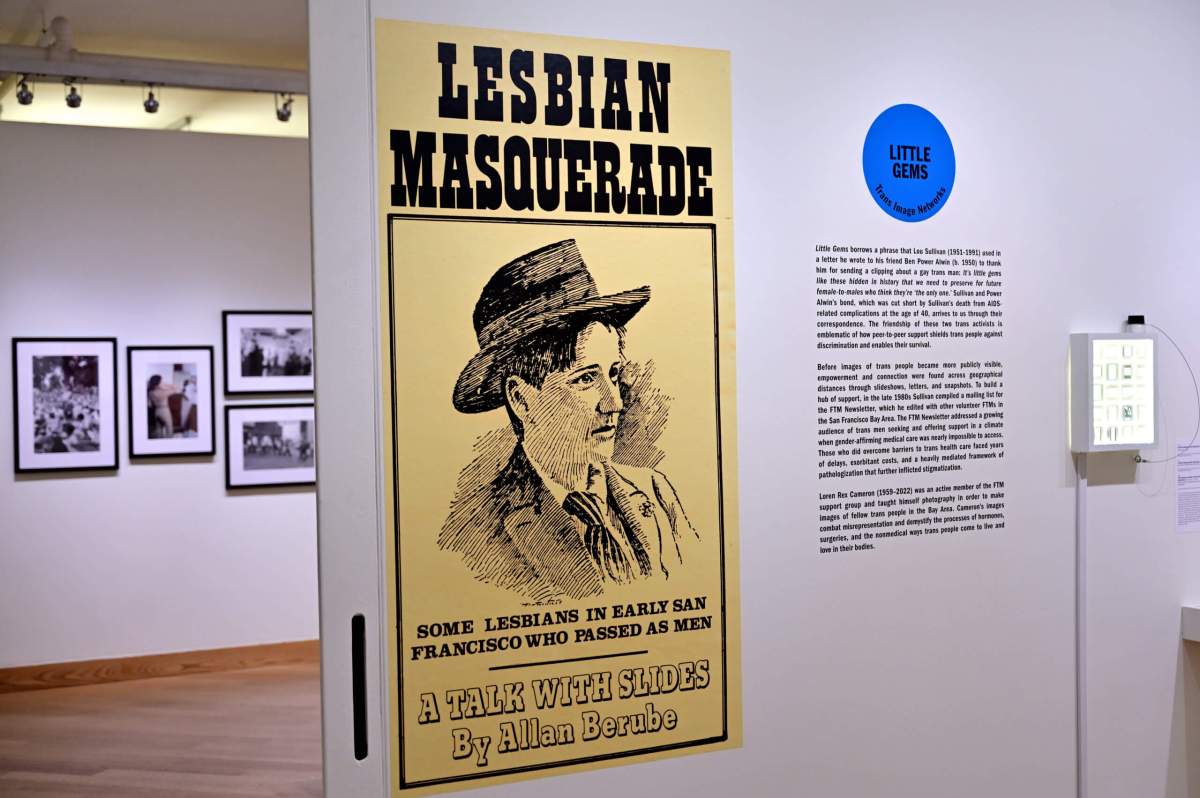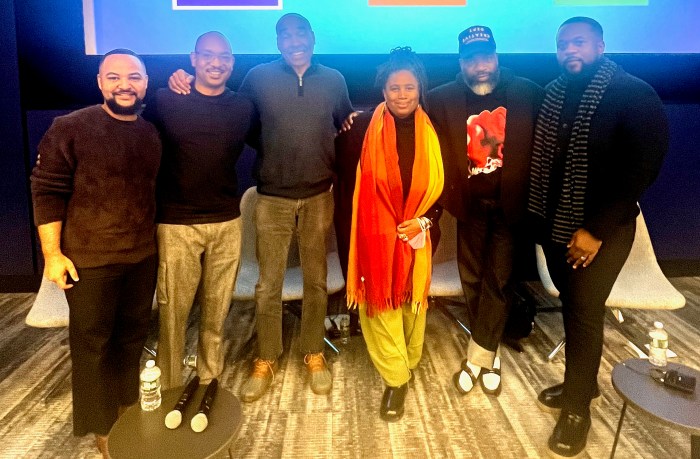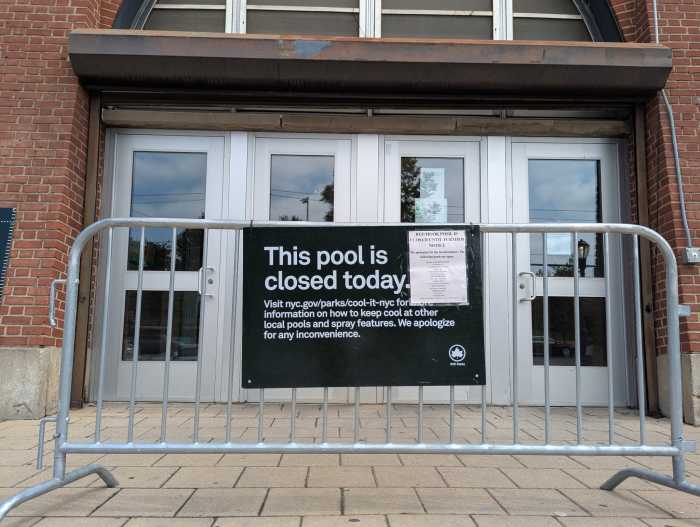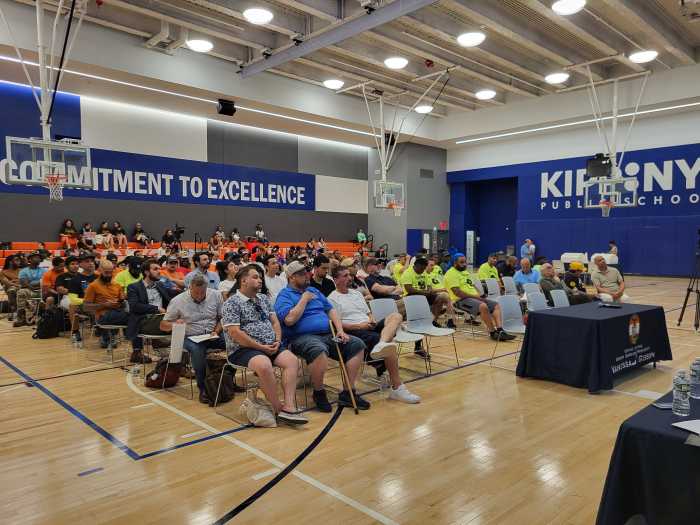For the spontaneous outbursts of laughter periodically heard resounding through the Leslie-Lohman Museum of Art, we have Joan E. Biren, familiarly known as “JEB,” to thank. The veteran photographer’s now-legendary slideshow, “The Dyke Show” (originally titled, “Lesbian Images in Photography, 1850 to the Present”), is part of the museum’s current exhibition, “Images on which to build, 1970s – 1990s,” and in addition to being an invaluable education in the history of photography from a lesbian-feminist perspective, parts of it are a riot! JEB’s narration is interspersed with hilariously erudite commentary on the patriarchal fantasies and identity-negating discourses used in the mainstream to frame lesbian photographers’ work or scrub their biographies of any suggestion of nonconformity. The absurdity of these euphemisms, their symbolic violence, JEB exposes with the delivery of a stand-up comedian.
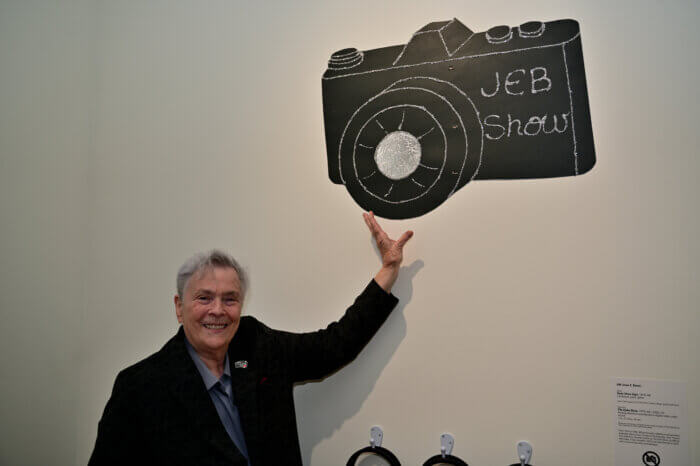
Visitors can listen to this masterful presentation by donning a head set and sitting down in a constructed seating area in front of the slideshow projected onto one wall. In this setting, humor, education, and protest are experienced collectively, extending the community-building goal of both “The Dyke Show,” which toured community spaces and universities between 1979 and 1984, and “Images on which to build, 1970s – 1990s,” whose title comes from the words by which one of “The Dyke Show’s” earliest hosts described it.
“The focus of the exhibition is educational projects that use photography that grassroots organizers were doing,” said curator Ariel Goldberg.
The exhibition is organized into six sections, each with a history of public-facing, often traveling, educational projects that were not only tied to, but generative of, social movements for feminist, trans, and queer empowerment and visibility.
If the media theorist Marshall McLuhan’s motto, “the medium is the message,” defined mass media production in the 1960s when McLuhan articulated it, the philosophy at work here is, “the archive is the agent.” “Images on which to build, 1970s – 1990s” is an exhibition conscious of both the temporality and materiality of media production. In particular, it foregrounds the significant role played by one media technology in particular: the slideshow.
Proceeding clockwise through the sections, we first encounter “Lola Flash in and alongside Art + Positive.” Flash used the cross processing technique of photo development to create images in which light and shadow are inverted, making it challenging, if not impossible, to discern the identities of their subjects.
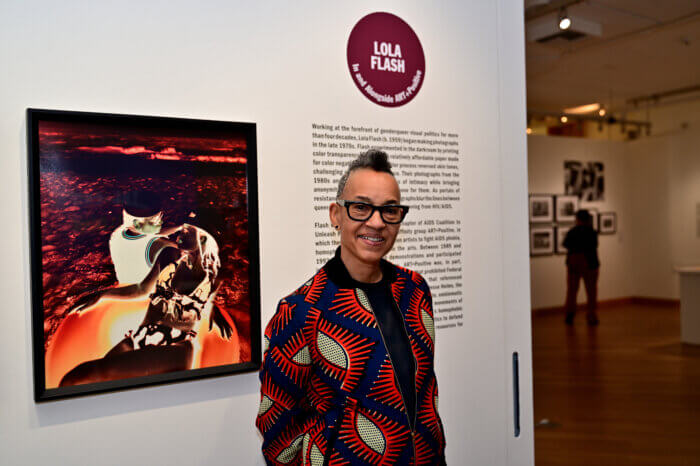
There are selections from the “Clit Club series” that Flash took of denizens of that iconic 1990s nighttime venue, not while in the club itself, which had a no-camera policy, but whom she met while she was working behind the bar. The images were then shown in a slideshow in the Clit Club. There is also work that Flash produced as an active member of the AIDS activist collective, Art+Positive.
“Diana Solís: Intimacies in Resistance” features selections from the photojournalist’s extensive documentation of lesbian organizing in her native Mexico and within Latinx communities in Chicago, where she grew up and began her photographic practice. Importantly, Solís’ mostly black-and-white oeuvre is transnational, drawing attention to issues of border crossing, literal and figurative.
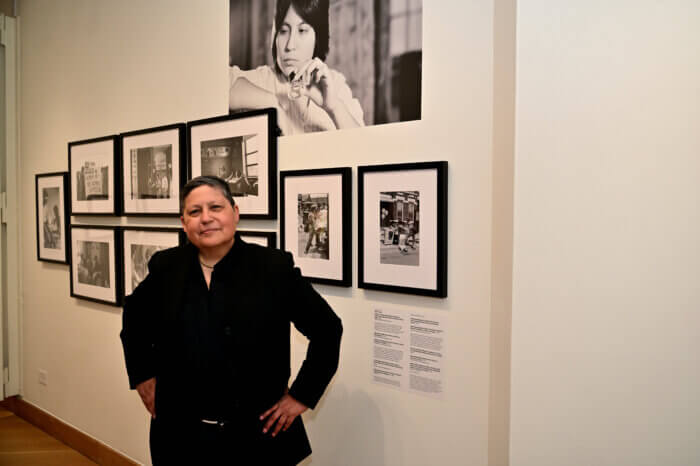
“Keepin’ On: Images of African American Lesbians” is derived from one of the Lesbian Herstory Archives’ first traveling exhibitions, which debuted in 1991 at the Lesbian & Gay Services Center in New York and travelled to community centers and universities for over 10 years. Not unlike “The Dyke Show,” this section documents the extensive yet underrecognized cultural and political labor of Black lesbians, over a century, through a range of photographic genres.
“Little Gems: Trans Image Networks” builds on community-based cisgender gay male Allan Bérubé’s 1979 slideshow, “Lesbian Masquerade: Some Lesbians in Early San Francisco Who Passed as Men,” which wound up in the hands of a lesbian collective that retitled it “…She Even Chewed Tobacco,” and fashioned it into a rental package comprised of script, carousel, and cassette tape. From there, the section documents the chain effect of influences and initiatives the slideshow had among trans activists and educators throughout the ensuing decades in multiple forms, from personal correspondence, to newsletters and pamphlets, to photographic (self-)portraiture.
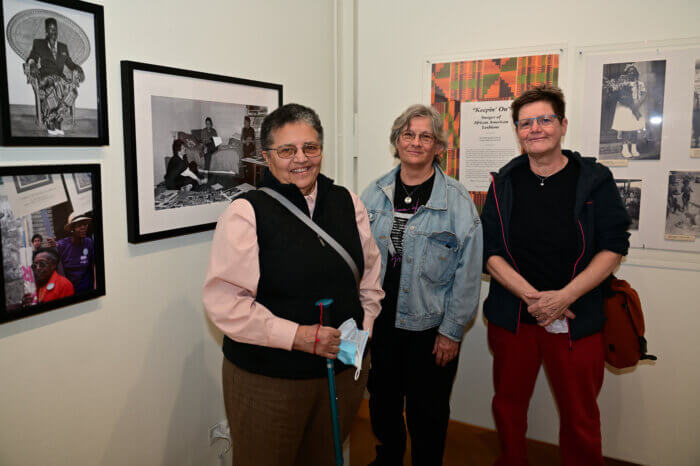
The “Electric Blanket: AIDS Projection Project” section honors this public-art slideshow projection of photographic representations related to the HIV/AIDS epidemic. Structured around the themes of “Memorial,” “Action,” and “Document,” the slideshow intermingles portraits of both deceased loved ones and people living with HIV/AIDS, with images from demonstrations, protest slogans, official statistics, and other information.
“I wanted to draw some dots between some photographers who are now in their seventies and sixties and think about the materials that they used and the communities that they were immediately serving, especially artists who were in activist groups,” said Goldberg. “What I want people to get out of this is, I hope, be inspired by ongoing social-movement work that takes the form of archiving and creating educational opportunities.”
Images on which to build, 1970s-1990s | Leslie-Lohman Museum of Art | Until July 30, 2023
Nicholas Boston, Ph.D., is a professor of journalism and media studies at Lehman College of the City University of New York (CUNY). Follow him on Twitter @DrNickBoston and Instagram @Nick_Boston_in_New York

